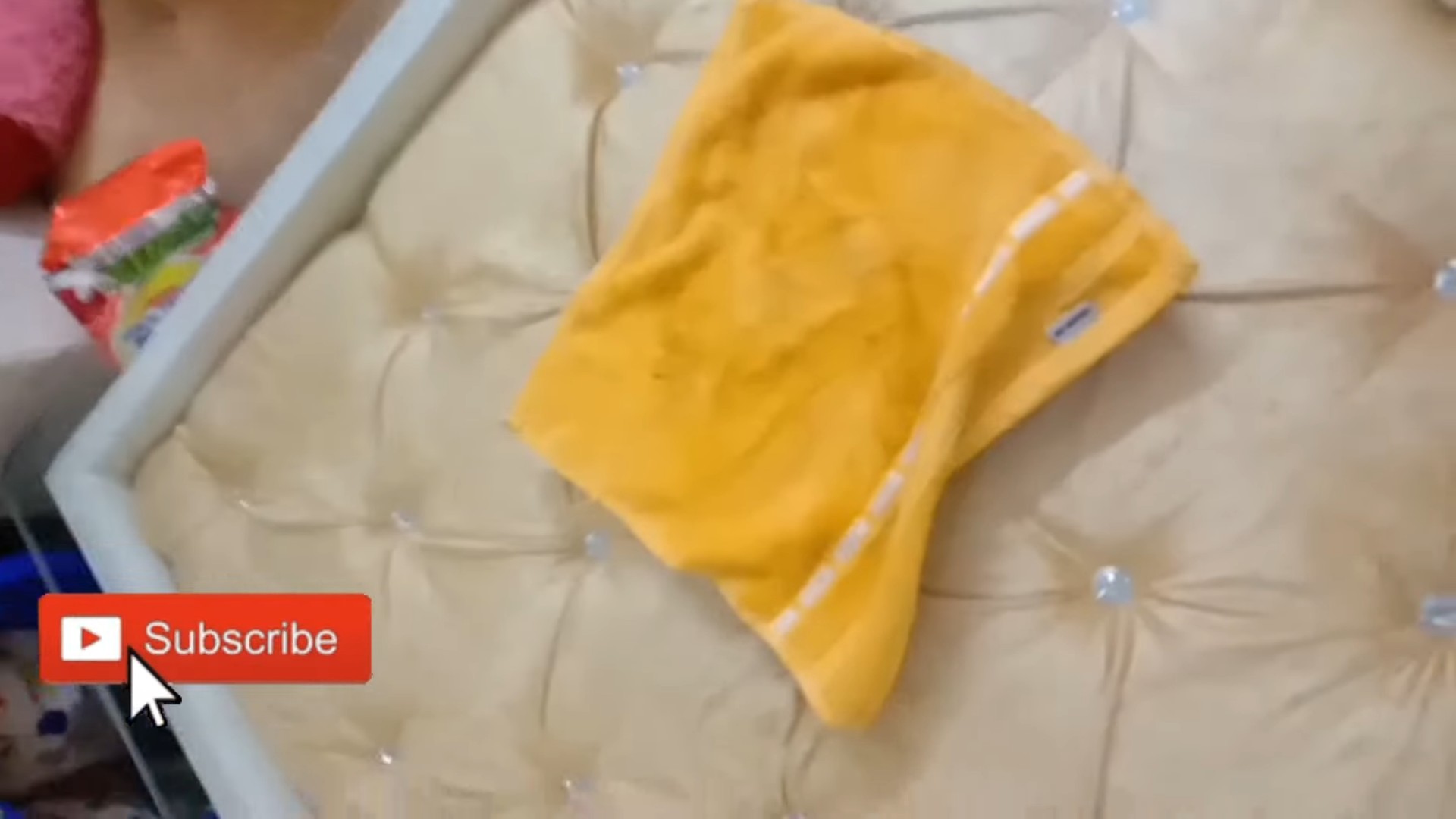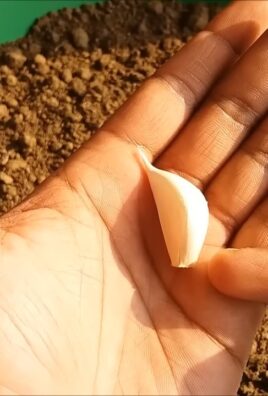Growing radishes indoors might sound like a quirky idea, but trust me, it’s a game-changer for any gardening enthusiast, especially those of us with limited outdoor space! Imagine fresh, peppery radishes gracing your salads and snacks, even in the dead of winter. No more relying on bland, store-bought versions – you can have vibrant, homegrown radishes right at your fingertips.
Radishes have a surprisingly long and fascinating history, dating back to ancient times. They were cultivated in Egypt before the pyramids were even built! Throughout history, they’ve been valued for their quick growth and nutritional benefits. Now, we’re taking that ancient wisdom and adapting it for the modern home.
Why should you learn this DIY trick? Well, for starters, growing radishes indoors allows you to bypass unpredictable weather and pesky garden pests. Plus, it’s incredibly rewarding to nurture something from seed to harvest, especially when you can enjoy the fruits (or rather, roots!) of your labor so quickly. This article will guide you through simple, step-by-step instructions and insider tips to ensure your indoor radish garden thrives. Get ready to experience the joy of fresh, homegrown radishes all year round!

Growing Radishes Indoors: A Beginner’s Guide
Hey there, fellow gardening enthusiasts! Ever thought about growing radishes indoors? It’s surprisingly easy and rewarding, especially when you’re craving that peppery crunch during the colder months. I’ve been doing it for a while now, and I’m excited to share my secrets to a successful indoor radish harvest. Let’s get started!
Choosing the Right Radish Variety
Not all radishes are created equal, especially when it comes to indoor growing. Some varieties are better suited for containers and shorter growing periods. Here are a few of my favorites:
* Cherry Belle: These are classic, round, red radishes that mature quickly (around 22 days). They’re reliable and produce a good yield.
* French Breakfast: These elongated radishes have a mild flavor and mature in about 25 days. They’re perfect for salads.
* Easter Egg: This mix of colorful radishes (red, pink, purple, white) adds a fun touch to your indoor garden. They mature in about 25 days.
* Sparkler: Similar to Cherry Belle, but with a white tip. They’re quick to mature and have a slightly milder flavor.
Gathering Your Supplies
Before you start planting, make sure you have everything you need. Here’s a checklist:
* Seeds: Choose your radish variety (or varieties!) and purchase high-quality seeds from a reputable source.
* Containers: You’ll need containers that are at least 6 inches deep. Radishes need room to grow downwards. I prefer using plastic pots with drainage holes.
* Potting Mix: Use a well-draining potting mix. Avoid using garden soil, as it can compact and hinder root growth. A mix of peat moss, perlite, and vermiculite works well.
* Grow Lights (Optional but Recommended): Radishes need plenty of light to thrive. If you don’t have a sunny windowsill, invest in a grow light.
* Watering Can or Spray Bottle: For gentle watering.
* Fertilizer (Optional): A balanced liquid fertilizer can help boost growth, but it’s not essential.
* Seed Starting Tray (Optional): If you prefer to start your seeds indoors before transplanting.
Planting Your Radish Seeds
Now for the fun part! Here’s how to plant your radish seeds:
1. Prepare Your Containers: Fill your containers with potting mix, leaving about an inch of space at the top. Gently pat down the soil.
2. Sow the Seeds: Sow the radish seeds about ½ inch deep and 1 inch apart. You can sow multiple seeds per container, but be sure to thin them out later if they all germinate.
3. Cover the Seeds: Lightly cover the seeds with potting mix.
4. Water Gently: Water the soil gently until it’s moist but not soggy. You can use a spray bottle to avoid disturbing the seeds.
5. Provide Light: Place your containers in a sunny windowsill or under a grow light. If using a grow light, position it a few inches above the soil surface.
6. Maintain Moisture: Keep the soil consistently moist but not waterlogged. Check the soil moisture daily and water as needed.
Caring for Your Radish Plants
Once your radish seeds have germinated, it’s important to provide them with the right care to ensure a healthy harvest.
1. Thinning: Once the seedlings have developed their first true leaves (the leaves that appear after the initial seed leaves), thin them out so that they are about 1-2 inches apart. This will give them enough space to grow. I know it’s hard to pull out those tiny seedlings, but it’s necessary for the remaining plants to thrive!
2. Watering: Water your radish plants regularly, keeping the soil consistently moist. Avoid overwatering, as this can lead to root rot. I usually water them every other day, but it depends on the temperature and humidity.
3. Lighting: Radishes need at least 6 hours of sunlight per day. If you’re growing them indoors, you may need to supplement with a grow light. I use a full-spectrum LED grow light for about 12 hours a day.
4. Fertilizing (Optional): If you want to give your radishes a boost, you can fertilize them with a balanced liquid fertilizer every two weeks. Follow the instructions on the fertilizer label. I usually use a fertilizer that’s specifically formulated for vegetables.
5. Temperature: Radishes prefer cool temperatures, between 60-70°F (15-21°C). Avoid placing them near heat sources, such as radiators or vents.
6. Air Circulation: Good air circulation is important to prevent fungal diseases. Make sure your plants have enough space around them and that the air is circulating freely.
Harvesting Your Radishes
The best part of growing radishes is harvesting them! Most radish varieties mature in about 22-30 days.
1. Check for Maturity: To check if your radishes are ready to harvest, gently brush away the soil around the base of the plant. If the radish is the size you want, it’s ready to pick.
2. Harvest Carefully: Gently pull the radish from the soil, holding it by the base of the leaves. If the soil is dry, you may need to loosen it first.
3. Wash and Enjoy: Wash the radishes thoroughly and enjoy them fresh. You can eat them raw in salads, sandwiches, or as a snack. You can also cook them in stir-fries or soups.
4. Succession Planting: To ensure a continuous harvest, sow new radish seeds every week or two. This is called succession planting.
Troubleshooting Common Problems
Even with the best care, you may encounter some problems when growing radishes indoors. Here are a few common issues and how to solve them:
* Leggy Seedlings: If your seedlings are tall and spindly, they’re not getting enough light. Move them to a sunnier location or provide them with a grow light.
* Small Radishes: If your radishes are small, they may not be getting enough water or nutrients. Make sure you’re watering them regularly and fertilizing them if necessary. Also, make sure you thinned them properly.
* Cracked Radishes: Cracked radishes are usually caused by inconsistent watering. Make sure you’re watering them regularly and evenly.
* Root Rot: Root rot is caused by overwatering. Make sure your soil is well-draining and that you’re not overwatering your plants.
* Pests: Radishes are generally pest-resistant, but they can sometimes be attacked by aphids or flea beetles. If you see pests on your plants, you can spray them with insecticidal soap.
Tips for a Bountiful Harvest
Here are a few extra tips to help you get the most out of your indoor radish garden:
* Use a good quality potting mix: This is essential for healthy root growth.
* Provide adequate light: Radishes need plenty of light to thrive.
* Water regularly: Keep the soil consistently moist but not waterlogged.
* Thin your seedlings: This will give them enough space to grow.
* Fertilize if necessary: A balanced liquid fertilizer can help boost growth.
* Harvest promptly: Radishes can become woody if they’re left in the ground too long.
* Succession plant: Sow new seeds every week or two for a continuous harvest.
* Rotate your crops: If you’re growing radishes in the same container year after year, rotate them with other crops to prevent soil depletion.
* Have fun! Growing radishes indoors is a rewarding experience. Enjoy the process and don’t be afraid to experiment.
Enjoying Your Homegrown Radishes
Now that you’ve harvested your radishes, it’s time to enjoy them! Here are a few ideas:
* Eat them raw: Radishes are delicious raw in salads, sandwiches, or as a snack.
* Cook them: You can cook radishes in stir-fries, soups, or roasted.
* Make radish greens pesto: Don’t throw away the radish greens! They’re edible and can be used to make a delicious pesto.
* Pickle them: Pickled radishes are a tangy and flavorful treat.
* Share them: Share your homegrown radishes with your friends and family.
Growing radishes indoors is a simple and rewarding way to enjoy fresh, peppery vegetables year-round. With a little care and attention, you can have a bountiful harvest of delicious radishes right in your own home. Happy gardening!

Conclusion
So, there you have it! Growing radishes indoors is not only possible, but it’s surprisingly simple and incredibly rewarding. Forget those bland, store-bought radishes that lack that peppery zing. With just a few basic supplies and a little bit of patience, you can cultivate a continuous supply of fresh, crisp radishes right in your own home, regardless of the weather outside.
Why is this DIY trick a must-try? Because it offers a level of freshness and control you simply can’t achieve with store-bought produce. You know exactly what goes into your radishes – no pesticides, no mystery fertilizers, just good old-fashioned care. Plus, it’s a fantastic way to connect with nature, even if you live in an apartment building in the middle of the city. The satisfaction of harvesting your own food is truly unparalleled.
Beyond the basic method, there are plenty of ways to experiment and personalize your indoor radish garden. Consider trying different varieties of radishes. French Breakfast radishes are known for their mild flavor and elongated shape, while Cherry Belle radishes are a classic choice for their vibrant red color and crisp texture. For a spicier kick, try growing Black Spanish radishes. You can also experiment with different types of containers. While plastic containers work perfectly well, terracotta pots can help regulate moisture levels and add a touch of rustic charm to your indoor garden.
Another variation to consider is succession planting. By planting a small batch of radish seeds every week or two, you can ensure a continuous harvest throughout the growing season. This is especially useful if you enjoy adding radishes to your salads, sandwiches, or as a crunchy snack.
Don’t be intimidated by the idea of indoor gardening. Growing radishes indoors is a great starting point for beginners, and it’s a fun and educational activity for the whole family. Imagine the joy of watching those tiny seeds sprout and transform into vibrant, edible roots in just a few weeks!
We wholeheartedly encourage you to give this DIY trick a try. It’s a simple, affordable, and incredibly satisfying way to enjoy fresh, homegrown radishes year-round. And most importantly, we want to hear about your experience! Share your photos, tips, and challenges in the comments below. Let’s create a community of indoor radish growers and learn from each other. What varieties did you try? What challenges did you face? What successes did you celebrate? Your feedback will help others discover the joys of growing radishes indoors and inspire them to embark on their own gardening adventures. So, grab your seeds, soil, and containers, and get ready to enjoy the delicious taste of homegrown radishes! Happy gardening!
Frequently Asked Questions (FAQ)
What kind of soil is best for growing radishes indoors?
Radishes thrive in well-draining soil that is rich in organic matter. A good potting mix specifically formulated for vegetables is ideal. You can also create your own mix by combining equal parts of potting soil, compost, and perlite or vermiculite. The compost provides essential nutrients, while the perlite or vermiculite improves drainage and aeration. Avoid using heavy garden soil, as it can become compacted and hinder root development.
How much sunlight do radishes need when grown indoors?
Radishes require at least 6 hours of direct sunlight per day to grow properly. If you don’t have a sunny windowsill, you can supplement with artificial grow lights. Fluorescent or LED grow lights are excellent options. Position the lights a few inches above the plants and keep them on for 12-14 hours per day. Rotate the plants regularly to ensure even light exposure on all sides. Insufficient light can result in leggy plants with small, underdeveloped roots.
How often should I water my indoor radish plants?
Water your radish plants regularly, keeping the soil consistently moist but not waterlogged. Check the soil moisture by sticking your finger about an inch deep. If the soil feels dry, it’s time to water. Water deeply, allowing excess water to drain out of the bottom of the container. Avoid overwatering, as this can lead to root rot. The frequency of watering will depend on factors such as the temperature, humidity, and type of container you are using.
How long does it take for radishes to mature when grown indoors?
One of the great things about radishes is that they mature quickly. Most varieties are ready to harvest in just 3-4 weeks from planting. Check the seed packet for specific maturity times for the variety you are growing. You’ll know your radishes are ready to harvest when the roots are about 1 inch in diameter. Gently pull them from the soil, being careful not to damage the surrounding plants.
What are some common problems when growing radishes indoors, and how can I prevent them?
Some common problems include:
* **Leggy plants:** This is usually caused by insufficient light. Provide more sunlight or supplement with grow lights.
* **Root rot:** This is caused by overwatering. Ensure the soil is well-draining and avoid overwatering.
* **Pests:** Aphids and flea beetles can sometimes infest indoor radish plants. Inspect your plants regularly and treat any infestations promptly with insecticidal soap or neem oil.
* **Bitter taste:** This can be caused by stress from heat or lack of water. Maintain consistent moisture levels and provide adequate ventilation.
Can I grow radishes indoors year-round?
Yes, you can grow radishes indoors year-round, provided you have adequate light and temperature control. Radishes prefer cooler temperatures, so avoid placing them near heat sources. Succession planting is a great way to ensure a continuous harvest throughout the year.
Do I need to fertilize my indoor radish plants?
Radishes are not heavy feeders, but they will benefit from a light feeding of fertilizer. Use a balanced liquid fertilizer diluted to half strength every 2-3 weeks. Avoid over-fertilizing, as this can lead to excessive foliage growth at the expense of root development.
What size container is best for growing radishes indoors?
Choose a container that is at least 6 inches deep to allow the roots to develop properly. The width of the container will depend on how many radishes you want to grow. A 6-inch pot can accommodate 3-4 plants, while a larger container can hold more. Make sure the container has drainage holes to prevent waterlogging.
Can I grow radishes in a hydroponic system indoors?
Yes, radishes can be successfully grown in a hydroponic system indoors. Hydroponics allows for precise control over nutrient levels and can result in faster growth rates. There are various hydroponic systems available, such as deep water culture, nutrient film technique, and aeroponics. Research the different options and choose a system that suits your needs and budget.
How do I store harvested radishes?
To store harvested radishes, remove the greens and wash the roots thoroughly. Place the radishes in a plastic bag or container lined with a damp paper towel. Store them in the refrigerator for up to 1-2 weeks. The damp paper towel will help keep them crisp and prevent them from drying out.




Leave a Comment